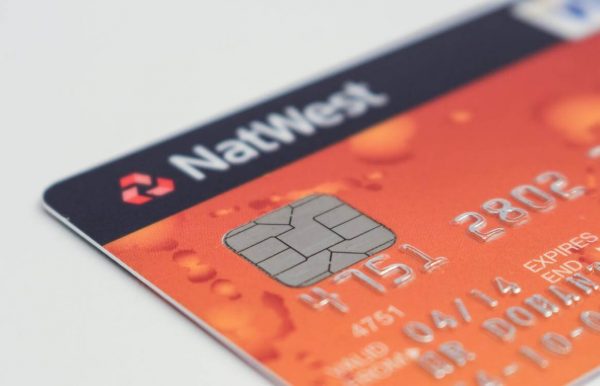A credit score, also known as a credit rating is an informed estimation by a lender or panel of the creditworthiness and affordability of a borrowing person, company or organisation. Improving your credit score means ensuring you are in the best position to be deemed credit-worthy, giving yourself the best chance of being accepted for the loan in question. These scores and ratings are used as a significant part of the decision-making process when it comes to loans, credit and finance applications for lenders.
A person or company that has a poor or a ‘negative’ credit rating is deemed to be a greater risk to the lender and more unlikely to default on repayments. Therefore, lenders will usually only offer increased interest rates or flat out rejections to those with poor ratings and credit history. This applies to almost every type of loan from instalment loans to mortgages, payday loans and others.
There are however a number of things that can be done to build a more positive financial picture; improving one’s credit rating. Some methods are deliberate, such as using credit repair loans and products when times are particularly bad. Other methods though are part and parcel of everyday life and can be practices fairly easily on a daily basis including managing one’s outgoings and repaying on time.
Paying on Time
One of the simplest ways to build a positive credit score is to simply pay debts and dues on time and there are many daily and weekly repayments made by millions of people, all of which can be properly utilised to strengthen and improve one’s credit score and subsequent history:
Credit Cards
One of the most utilised forms of short term credit, credit cards provide the instant credit many need on a day to day basis. The ideal situation with a credit card is to clear the balance in full at the end of each month to avoid any interest and additional payments on top of what it owed. Repaid on time, there is 0% interest applied to a credit card, with the ‘borrower’ paying only for what they have used.
However, should the balance not be cleared at the end of the month, the lender [card provider] will add interest to what is owed, meaning that ultimately, the borrower will need to repay more than they actually spent in the first instance. Whilst most credit cards allow for minimum repayments to be made each month; covering the interest, in the long run this is very costly.
Clearing your balance each month, is a sign to lenders and prospective finance providers that the holder of the credit card account is responsible and debt free in this regard. Therefore, the risk is reduced for the lender when providing credit, making the borrower in question a favourable prospect.

Direct Debits and Overdrafts
As with credit cards, most people in the 21st Century will have some degree of direct debit set up with an account they own. A direct debit is simply a standing order with another party who receives payment at a set time (for example each month) automatically. Many people have direct debit arrangements set up for things such as:
- Gym Memberships
- Car Finance (leases and hire purchases)
- Netflix
- SKY TV
- Standing Orders
- Subscription Packages
Having a direct debit is no bad thing. However, having a direct debit that ‘bounces,’ where the provider of the service or product is unable to receive payment due to insufficient funds is very much negative. In terms of credit, it is viewed as the borrower using a product or service that they cannot afford, therefore being irresponsible with their finances.
Conversely however, having regular direct debits that go through without a problem are positive, with many lenders and credit providers requiring borrowers to have a degree of direct debit in place on an account. By having this and being able to make the payments each month, the borrower is showing a high degree of responsibility with their finances; desirable to lenders.
Financial Partnerships and Marriages
A financial partnership or marriage is exactly what it sounds like and should wherever possible be avoided. It is best to be ‘your own person’ in the eyes of creditors and lenders. For example, a couple get married and need to apply for credit for a mortgage. However, one party has a positive credit rating whilst the other has a negative one.
If the partners are financially linked, for example by having a joint account, it is likely to be more worthwhile for the party with a positive rating to be the name and signatory on the application as their credit history and practices will be taken into account which is the preferred option.
Equally, should two partners, be they partners through marriage, business or otherwise who split up should also break ties financially. This means informing credit providers and lenders that they are no longer together to ensure that one’s practices can no longer impact the others simply through being tied to them.
Minimise your Credit Applications
Each time an applicant submits an application for a loan or credit of any nature; be it a personal, secured, unsecured or business loan, the likelihood is that the lender or lenders receiving the application will undertake some form of credit check. These come in two distinct forms:
Hard Credit Checks – These are checks which leave a ‘footprint’ [record] in the applicant’s credit record. Having numerous records of credit checks having been carried out in one’s credit history is an indication that they have been rejected from many products and so have had to apply to various others to seek acceptance.
Soft Credit Checks – These are also commonly known as ‘quotation checks’ and can be requested by the borrower. These checks are often somewhat less detailed and so will apply to lower value products such as some payday loans and credit cards. However, they will leave no record of a search and therefore no trace for another prospective credit check.
It is important therefore to minimise the number of credit checks one makes themselves liable for as the more that exist over a relatively short period of time, the more it looks as if there have been rejections. This also shows that the borrower expects their loan application to be rejected; another negative sign for prospective lenders.

Unused Credit Cards and Store Cards
Whilst having a credit card is certainly no bad thing and repaying on time is a positive financial practice, having numerous cards that are dormant for a prolonged period of time is negative to one’s credit rating.
There will be a record of the card having been applied for and the subsequent acceptance. Having access to a large amount of credit, even if it is not being used is a negative signal for lenders and credit providers.
When closing cards and clearing their balances, the best way to do this is to shift all of the debt from the cards onto a single card that provides 0% interest on such payments. These payments between credit cards are known as ‘balance transfers’ and can be used to tidy up what one owes (Source: Money Advice Service). By consolidating all debts [on cards] into a single debt, the borrower is practicing positive credit behaviour; favoured by lenders.
However, having a bank account with positive financial practices (such as direct debits or similar) are unlike credit cards. Left open and available they provide a positive indication for lenders and credit providers.

Managing Insurance Payments for your Credit Score
Most of us have insurance to varying degrees. However, one of the most common policies taken out by millions of people every year across the UK and the world is car and vehicle insurance. Policy providers will allow for either annual [lump sum] or monthly repayments of the insurance policy. By choosing to pay the premium off on a monthly basis though, there is interest applied to the product.
Therefore, not only will the borrower be paying more in the medium to long term, but they will in effect be taking out a form of credit. Paying off a policy in one go is one of the easiest ways to save money on your car insurance.
This means there will be credit checks performed by the insurance company to make sure this can be comfortably afforded. Subsequently, there will be a record of a credit check on the borrower’s credit record which could easily have been avoided, had the payments been made on an annual basis.
Day to Day Best Practices
In addition to the above factors and practices, there are several logical day to day actions and practices that can be easily undertaken to improve one’s credit score and history, becoming a much better prospect for lending to. These include:
- Avoiding bankruptcy and loan defaults at all costs
- Paying off all outstanding debts of any nature, indicating responsible credit behaviour
- Avoiding overdrafts and reaching credit limits on cards and credit facilities
- Ensuring you are on the Voter’s Register
- Checking your details on your credit report to ensure they are up to date for any lenders matching your application details



